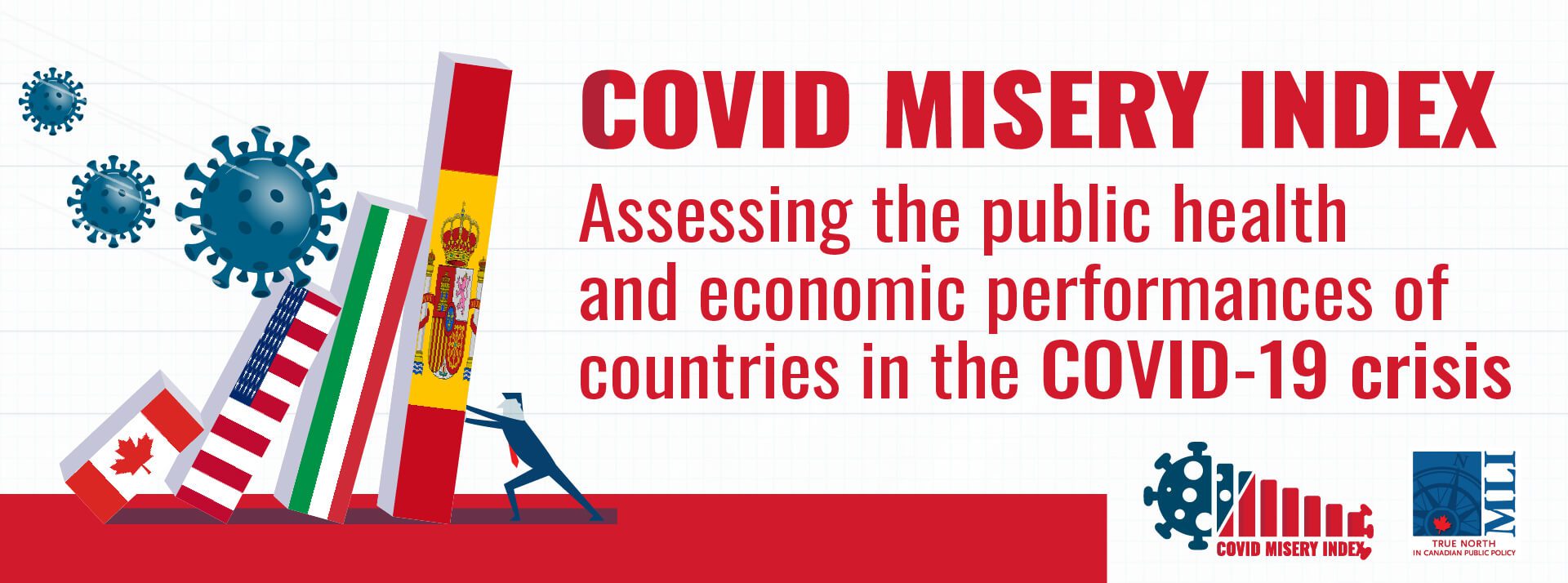View the full, updated COVID Misery Index here. Download the data for the April 7 update here. For more information, including a full methodology and analysis of the initial COVID Misery Index, click here, and view the original, non-updated Misery Index here.
To find all the MLI products related to the COVID Misery Index, click here.
What’s Happened Over the Past Week?
MLI COVID Misery Index Weekly Update (April 7, 2021):
The Macdonald-Laurier Institute’s COVID Misery Index is updated each week as we follow the progress of 15 developed countries in fighting to preserve the health and prosperity of their citizens during the pandemic. Canada remains stuck in 11th place with a poor performance in responding to the pandemic, and severe economic fallout impacting Canadians. (For more detail about the methodology and initial results, click here.)
As of April 7, like many other countries around the world, Canada is experiencing an increase in cases. Some countries appear to be entering a new wave of COVID-19 infections, dominated by new variants that appear to be more infectious and potentially more fatal.
Canadian cases, hospitalizations and deaths from COVID-19 are all relatively low compared to other countries. However, our excess death rates for those aged 15+, and especially those aged 85+, remain particularly worrying. With caseloads increasing and evidence of ‘pandemic fatigue’ starting to emerge, it is critical that our most vulnerable citizens get vaccinated as quickly as possible. We note that Canada’s rate of excess deaths for those aged 85 and over is now well above that of the US, suggesting their vaccination program is working and is allowing a resumption of normal access to health care among the aged. This reflects negatively on Canada’s Disease Misery score, although Canada still receives a B+ grade and remains in 5th place in this category.
Canada’s Response Misery score remains a concern, still receiving a D grade and the last place ranking in this category, although we do note that our vaccination rate has improved. However, the recent decision to suspend the use of the AstraZeneca vaccine in the population aged under 55 could mean that our progress is delayed. Canada’s strategy of getting a first vaccine to as many people as possible has resulted in a relatively slow rate of getting residents fully vaccinated. With a decline in cases and world-leading vaccination programs, the US and the UK lead the countries on our list in their COVID-19 response over the past week.
Current hot spots for the disease are the continental European countries, with France announcing a nationwide lockdown to try to slow the spread of the virus. Disease Misery remains lowest in Australia, although these results do not reflect the current outbreak that has hit some Australian states. Their outbreak should be a lesson that even countries which appear to have eliminated COVID-19 remain vulnerable, with citizens returning from abroad being the source of new outbreaks. This virus remains a tricky one, and even the best attempts to control it cannot completely eliminate it from getting into the community.
Looking Ahead
The current increase in cases in many countries is worrying and places additional urgency on getting vaccinations distributed as widely and as quickly as possible. In Canada, we remain particularly concerned with the elevated rates of excess deaths and the desperate need for access to health care for non-COVID-19 related reasons to improve. We hope the concerns with the AstraZeneca vaccine can be resolved and that production of vaccines continues apace. Finally, we will be watching Canada’s “Severity” score, a measure of Response Misery, as new restrictions are imposed in Ontario, BC, Alberta and Quebec.
Richard Audas, Faculty of Medicine, Memorial University of Newfoundland





